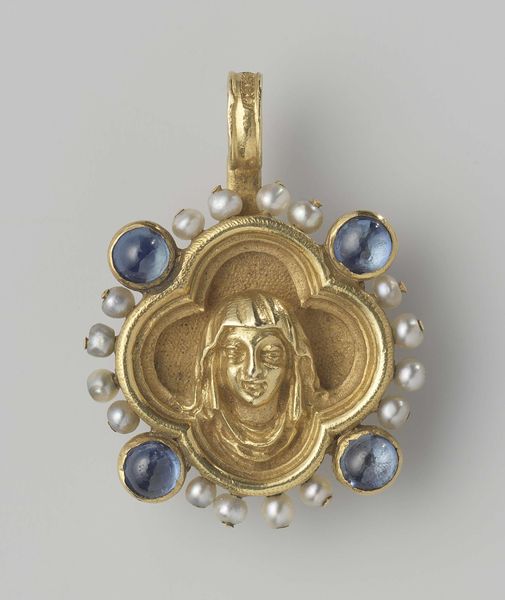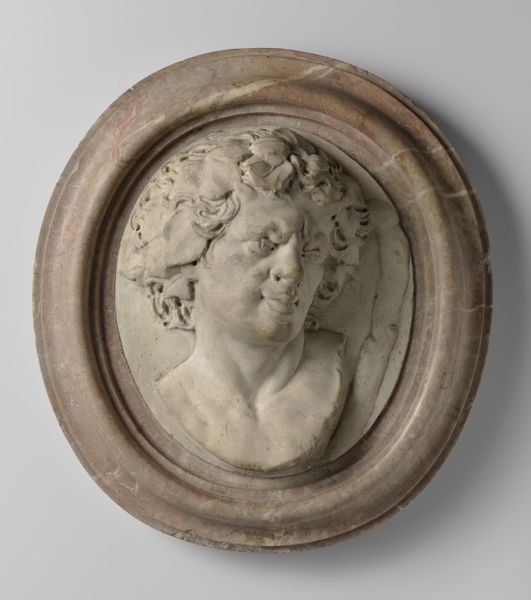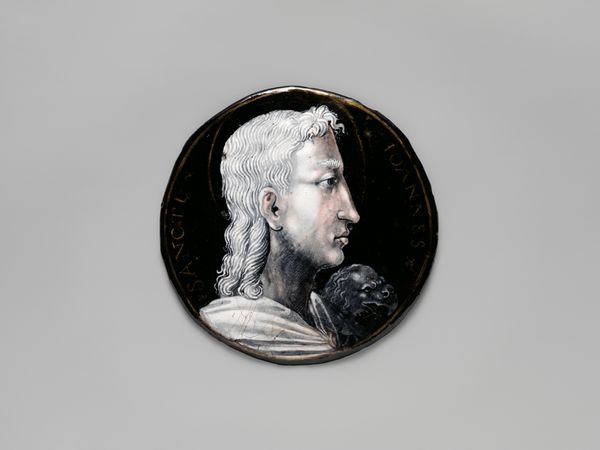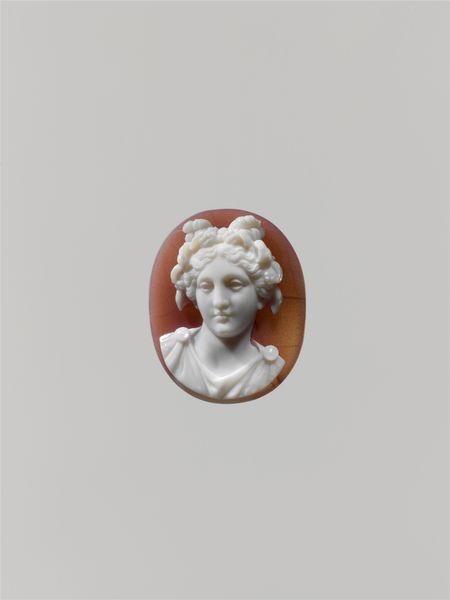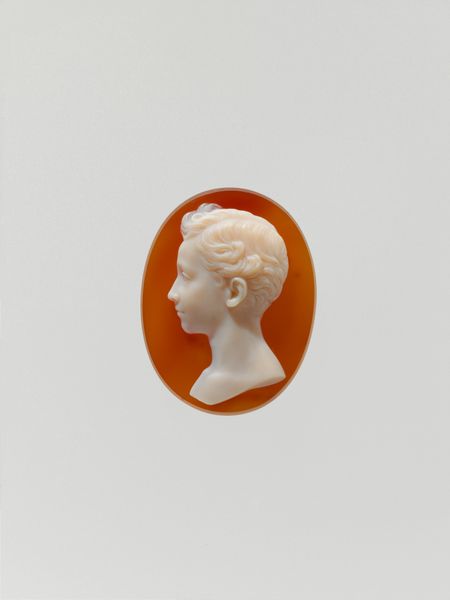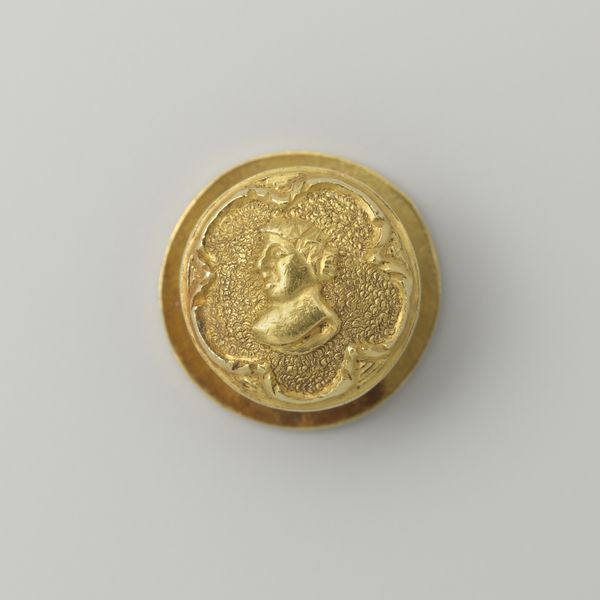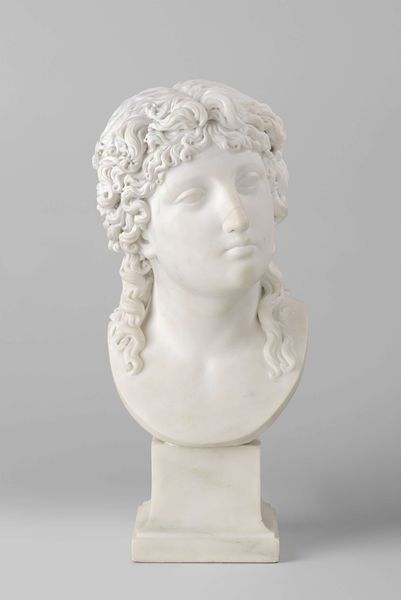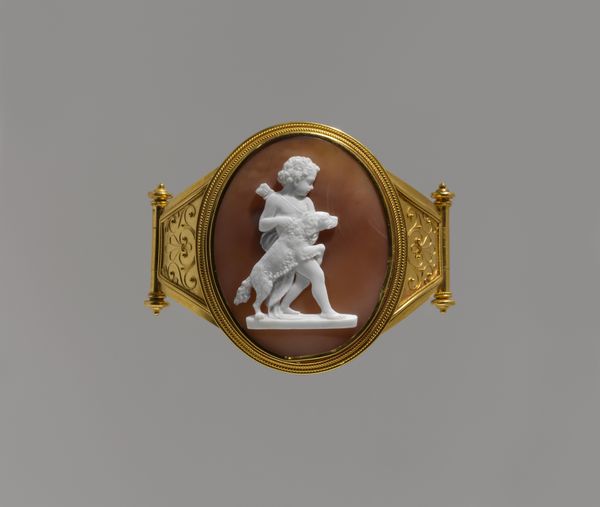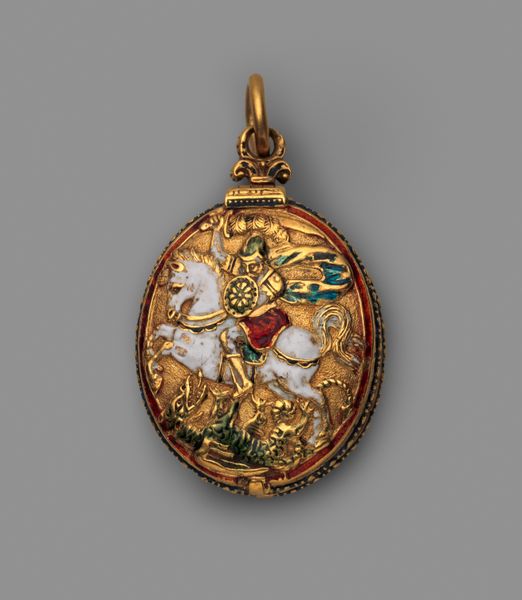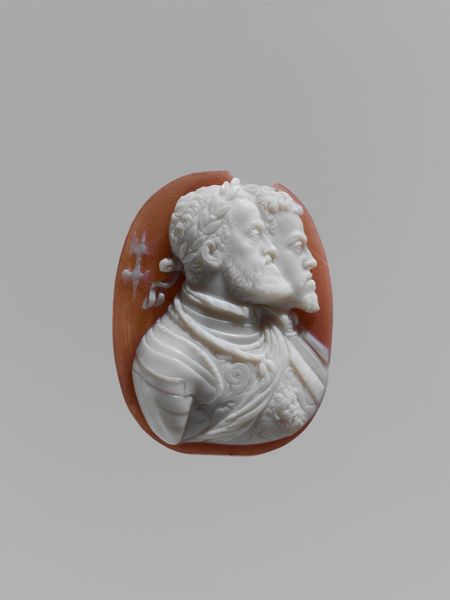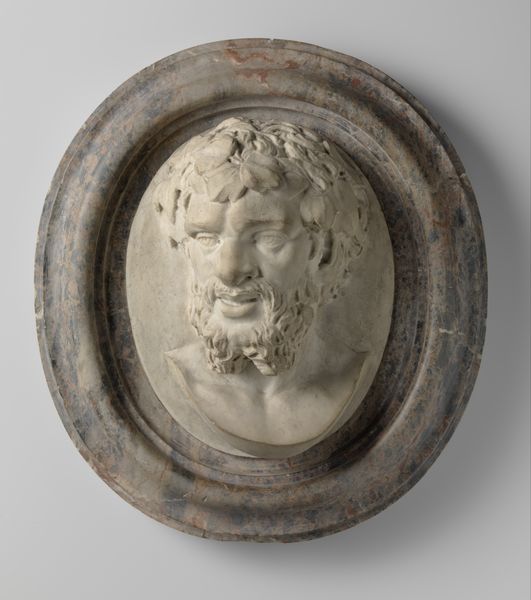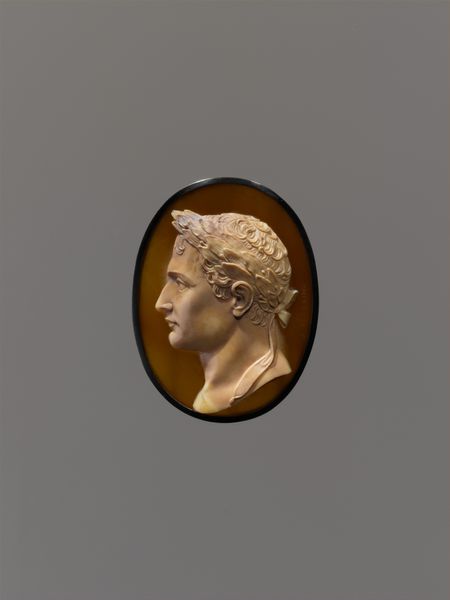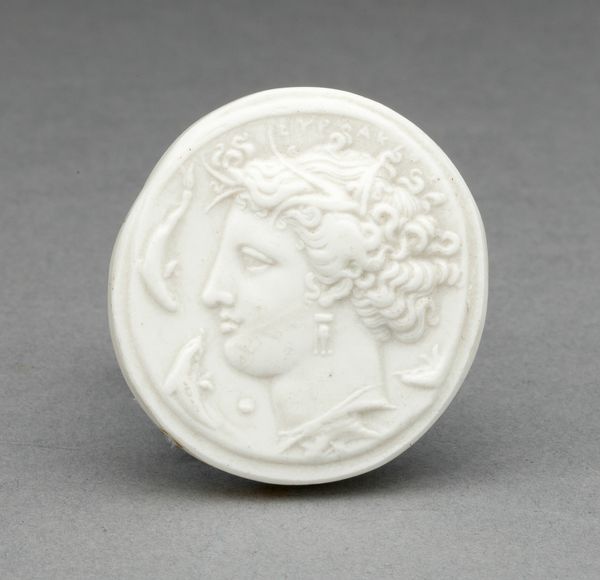
relief, sculpture, engraving
#
neoclacissism
#
head
#
relief
#
sculpture
#
history-painting
#
decorative-art
#
engraving
Dimensions: Overall (isible cameo): 2 1/8 in. (5.3 cm), 53.2 mm; Overall (in setting): 2 11/16 x 2 11/16 in. (6.8 x 6.8 cm)
Copyright: Public Domain
Curator: Oh, wow. First glance? Kinda fierce, but also...stunning? Like a bloody sunset. Editor: Indeed! What we're observing is Benedetto Pistrucci's "Head of Medusa," a relief sculpture created sometime between 1840 and 1860. It currently resides at the Metropolitan Museum of Art. Considering Medusa's loaded history, how do you interpret its contemporary significance? Curator: It’s wild, right? Red stone—carnelian, maybe?—snakes for hair, that gold frame…she looks almost…royal? The way those white wing motifs around the edge break up the gold. Definitely plays with the monster/victim binary. I'm feeling a whole renaissance reclamation vibe. Editor: It absolutely disrupts established narratives. Historically, Medusa has been a symbol of female rage, a victim of sexual violence demonized and monstrously othered. Pistrucci, within a neoclassical framework, seems to engage with her image as powerful, tragic, even… beautiful, as you noted. Do you sense that aestheticization impacts its political resonance? Curator: Hmmm…maybe it softens the edges a bit? But isn’t that interesting, too? Like, reclaiming beauty even in trauma? Still, this ain't your typical gruesome Gorgon. The clean lines, that almost serene expression… it’s like a meditation on strength born from pain, but filtered through 19th century sensibilities, of course. What I love is, it makes you think about all those layers. Editor: Precisely! Pistrucci offers us not just a mythological figure but a complex meditation on power, beauty, and the lasting echoes of historical trauma—framed, quite literally, within the context of its time and our own. And while that classical approach can feel dated, maybe even problematic given our contemporary perspectives on these narratives, it does open up a critical space. Curator: Yeah, and like you said, still makes you think...a long time later. Editor: It's truly astonishing how artworks can echo across the ages. Curator: Right? Snaky, but golden!
Comments
No comments
Be the first to comment and join the conversation on the ultimate creative platform.
